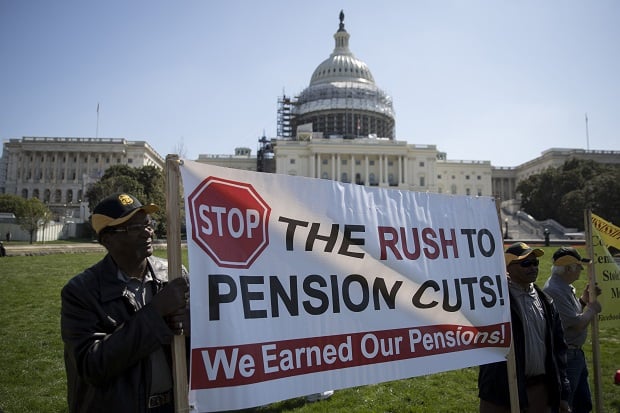Not only is U.S. nuclear power firm Westinghouse Electric Co.LLC bankrupt and on the mat after a failed reactor project, itsemployees have been given another dose of bad news—something thatcame as a surprise: According to the U.S. government's pensioninsurer, its retirement plan has a massive shortfall.
|Reuters reports that although the vast majority of bankrupt companieswith major pension deficits indicate that underfunding years before theyfile for Chapter 11, that was apparently not the case forWestinghouse, whose Westinghouse Electric Co Pension Plan, withabout 9,700 participants, looked to be fully funded in its mostrecent report to the Department of Labor in 2015.
|The Pension Benefit Guaranty Corp. has, contrary to Westinghouse'sown figures, estimated the pension plan is underfunded by $937million.
|That was revealed in previously unreported court filings inAugust, the report says. The shortfall is conditional onWestinghouse resorting to the tools of bankruptcy to terminate theplan—which would mean that the PBGC would step in, take over theplan and apply its more conservative accounting.
|According to Westinghouse spokeswoman Sarah Casse, cited in thereport, the company has not told the agency it will end theplan.
|While Westinghouse, owned by Toshiba Corp. of Japan, is lookingfor bids on the company, it is asking potential buyers to assumethe pension would be maintained and that annual contributions wouldcontinue near current levels.
|But buyers expected to be attracted to the deal are likely to beprivate-equity investors that probably will not want to take on theobligations of a defined benefit plan and probably will insist, inthe wake of the PBGC determination, that the company terminate theplan.
|According to PBGC data, not only does the shortfall exceed theplan's $926 million in assets but it would also be among the 10largest for a pension shortfall, ranking ahead of Trans WorldAirlines in 2001 and Pan American Air in 1991 and 1992.
|However, the claim doesn't result from fraud or mismanagement,but a difference between how Westinghouse and the PBGC calculatehow much must be set aside today to satisfy future pensionbenefits.
|Under Department of Labor rules, Westinghouse is required toassume that a bond portfolio will earn a much higher rate of returnthan the current market rates.
|PBGC, on the other hand, uses those current market rates in itscalculations — which indicate that more money is needed today topay for retirees.
|As a result, Joseph House, a principal at Palisades CapitalAdvisors and former head of the PBGC's restructuring group, iscited in the report saying that PBGC claims in bankruptcy casesoften catch other creditors off guard.
|Employees have been caught off guard as well—and that couldweigh on the company's future, since Westinghouse has said in courtdocuments that hanging onto its highly specialized engineers is keyto its success. Until it filed for bankruptcy in March, thepension was one way to do so.
|If the plan is terminated, that would result in moreWestinghouse debt and less for other creditors, as well as possiblyreduced benefits for plan participants.
|In that case, participants will receive a guaranteed benefitfrom the PBGC, which currently hits a maximum at about $64,000 ayear. Any annual pension payments above that level could be lost,although there are exceptions.
|From: BenefitsPro
Complete your profile to continue reading and get FREE access to Treasury & Risk, part of your ALM digital membership.
Your access to unlimited Treasury & Risk content isn’t changing.
Once you are an ALM digital member, you’ll receive:
- Critical Treasury & Risk information including in-depth analysis of treasury and finance best practices, case studies with corporate innovators, informative newsletters, educational webcasts and videos, and resources from industry leaders.
- Exclusive discounts on ALM and Treasury & Risk events.
- Access to other award-winning ALM websites including PropertyCasualty360.com and Law.com.
*May exclude premium content
Already have an account? Sign In
© 2024 ALM Global, LLC, All Rights Reserved. Request academic re-use from www.copyright.com. All other uses, submit a request to [email protected]. For more information visit Asset & Logo Licensing.








